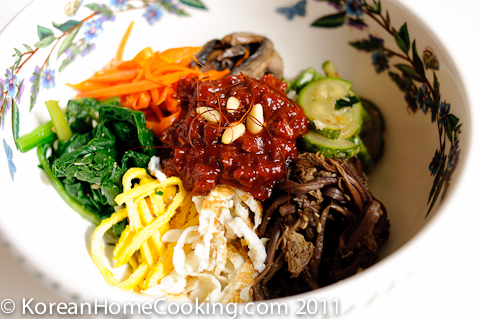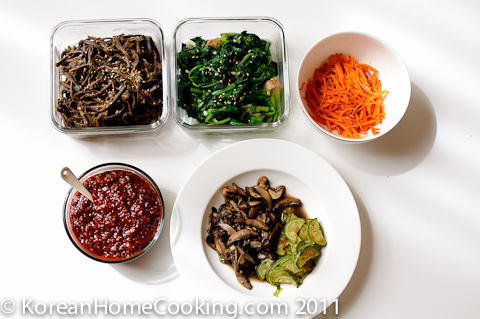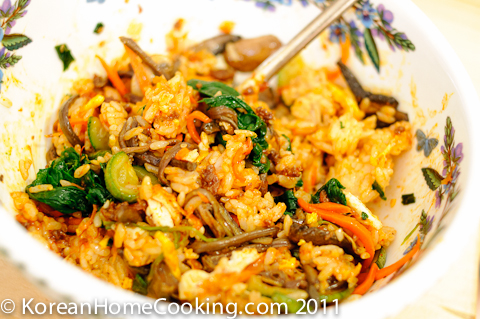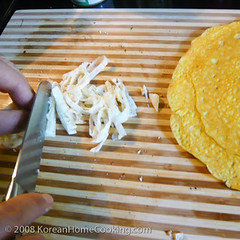
There is no denying that the popularity of Korean food is fast growing in recent years across the United States as well as in other parts of the world. I often get requests from the Middle East or from Africa for Korean recipes. Some pople also email me pictures of Korean food products they bought and ask me to translate the instructions on the packaging. Whenever I get those kinds of requests especially from the countries which I have seen only on a map and have little knowledge of, I feel really connected to these people through this truly world wide web. I can see food travels with no borders. (By the way, if you need a help with translating Korean on packaging and etc, I would be glad to help.)


As the popularity of Korean foods is growing, I noticed that one of the most popular Korean dishes among non-Koreans is bibimbap, along with bulgogi, tteokbbokki, soft tofu soup. I can see why people love bibimbap. It's not only colorful to look at, but there are so many different flavors tossed into a single bowl of rice. Each ingredient is tasty enough on its own. When they are all mixed together, the harmony of different flavors is enhanced with its spicy dressing.

Bibimbap is not a simple dish to make because you are really making several different dishes and each takes time. Once you have them ready, it's easy since all you need to do is to mix them together. Note that the ingredients that go into bibimbap may vary depending on the availability of ingredients or your preference for specific ingredients. After all, bibimbap literally means "mixed rice" so it doesn't really matter what you mix with.
Ingredients:
steamed rice (1 cup per serving)
Toppings:
bean sprout salad
spinach salad
gosari salad
zuchini (salted and pan-fried with a pinch ground sesame seeds)
carrots (1, julienned and pan-fried)
mushroom (4, sliced and pan-fried)
egg (1, egg white and yolk separated and fried)
Sauce:
beef chili paste sauce
Garnish:
pine nuts (4)
dry chili thread
sesame oil (1 tbl)
1.
 See Beef Chili Sauce fore detailed recipe. If you have bulgogi as topping, you can use regular chili paste instead.
See Beef Chili Sauce fore detailed recipe. If you have bulgogi as topping, you can use regular chili paste instead.2.
 See Bean Sprout Salad for detailed recipe.
See Bean Sprout Salad for detailed recipe.3.
 See Spinach Salad for detailed recipe.
See Spinach Salad for detailed recipe.4.
 See Gosari Salad for detailed recipe.
See Gosari Salad for detailed recipe.5.
 Separate egg yolk and white, spread them thin on a skillet, pan fry and then cut thin. See the recipe for Party Noodle Soup for pictures.
Separate egg yolk and white, spread them thin on a skillet, pan fry and then cut thin. See the recipe for Party Noodle Soup for pictures.6.
 Salt thoroughly sliced zuchini and wait 20 minutes. Squeeze out water, pan fry with a pinch of ground sesame seeds. See the recipe for Party Noodle Soup for pictures.
Salt thoroughly sliced zuchini and wait 20 minutes. Squeeze out water, pan fry with a pinch of ground sesame seeds. See the recipe for Party Noodle Soup for pictures.7.
 Julienne carrot and pan-fry with a little bit of oil. Place all ingredients with steamed rice with chili paste sauce and a table spoon of sesame oil. Mix well and enjoy~
Julienne carrot and pan-fry with a little bit of oil. Place all ingredients with steamed rice with chili paste sauce and a table spoon of sesame oil. Mix well and enjoy~















